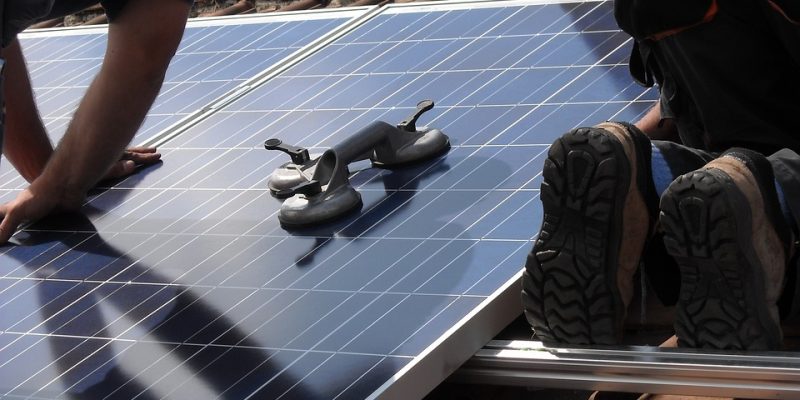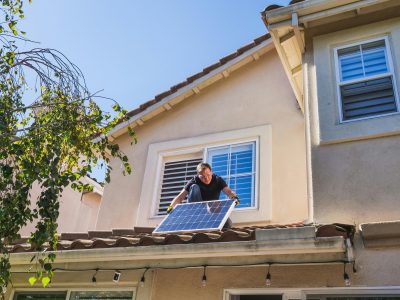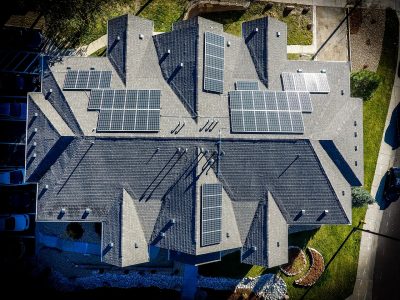The sun in all ages has been an indispensable assistant to architects who have managed to use this outstanding energy for the benefit of people. There is even a special term “solar architecture”, denoting a special approach to the construction of buildings, taking into account the possibilities of solar energy. But if earlier interaction with the sun was mainly about correctly orienting the building, and choosing materials that accumulate heat or reflect the sun’s rays, today we are primarily talking about active technologies that make the sun work for a person. Read more about this in our article, which talks about today’s “solar architecture” and the most striking examples of its implementation.
Imagine the energy emitted by four trillion 100-watt light bulbs. It is this flow of energy that goes from the Sun to the Earth every second. It would be unwise not to use such a powerful force with today’s technical capabilities.
The solar mask adapts to changes in temperature: in summer it gives protection from the sun, and in winter it transmits rays.
You can contact American Solar company for advice on choosing a solar panel.
What is solar architecture?
Solar architecture is an investment in your future. Buildings of traditional architecture are like a sprinter over a short distance without competition: cheaper and immediate. Solar architecture is 10-30% more expensive and will pay for itself in about 5-10 years. But the owner of a “sunny” cottage will not need to invest in heating and hot water, and clean air cannot be assessed at all.
Solar energy can be used actively and passively. Let’s talk about active systems using solar energy. When we use the term “active” we mean any system that uses special instruments, electronic controls, or other intelligent systems.
- Solar panels.
Each of them consists of silicon cells. When light hits its surface, an electric current is generated due to the photovoltaic effect. The collected energy can be stored in batteries and used to power electrical appliances in the house.
- Solar collectors.
The principle of their operation is that solar energy heats the liquid inside the collector, due to which thermal energy arises. It can be used for domestic water heating and heating.
What makes such systems “active” is the need to use a large amount of equipment to benefit from solar energy. In the case of solar panels, you also need batteries, a controller, an inverter, fasteners, and many other little things.
Advantages of active use of solar energy:
- It helps reduce carbon emissions.
- You can save on utility bills.
- Active solar energy is more efficient than passive solar energy.
Solar panels and collectors are always more powerful than passive technologies. – You can always upgrade the system to increase efficiency.
Solar active architecture
The architectural concept of a solar home is widely known. The space, protected from the wind and open to the sun, is formed by a wind-protective wall turned to the south, radial in the plan, collecting the sun’s rays, and a canopy – a roof that gives shade from the high summer sun. The shape and finishing materials of the inner surface of the wall should contribute to the concentration of sunlight, or their absorption to warm up the thermal masses, during the low winter solstice. By cutting off the inner space of the “horseshoe” from the south from the external environment with a stained-glass window, we use the greenhouse effect: when the thinnest metal coating or heat-reflecting film is applied to the glass surface, the radiant component of heat loss is directed back into the room.
A thermal array (a stone wall behind glass, a floor-porcelain stoneware on a reinforced concrete slab – or a massive fireplace under a skylight), while retaining solar heat, should provide comfortable indoor temperatures at night. From the windward side, the wall and roof of the solar house can be turned into a green hill, which will not only protect against the cold north wind but will also contribute to additional savings of solar heat accumulated by massive structures. Summer shading of the southwestern and western sectors of the horizon will provide external green screens for plants.
What does the active solar system consist of?
Active solar heating systems consist of air solar collectors, a ventilation duct system, and a heat storage, and are often equipped with a backup heat source (gas, wood, electric) and a control system built into the system. Despite the apparent primitiveness, such solutions are widely used in both private and commercial construction, as well as the construction of municipal institutions in the United States, Western Europe, and around the world, which are operated up to the present, bringing satisfaction to their users by reducing heating costs. , and by realizing that the user has contributed to a global improvement in the ecological state of the environment – by significantly reducing the amount of carbon dioxide produced by this farm.
In such buildings, the cool air from the room is blown through the duct system with the help of fans into the solar collector, which is a glazed box with an absorber painted black. The absorber heated by the sun heats the air in contact with it. Further, the control system decides: to direct the heated air directly into the room – for immediate use, or into the heat accumulator – for accumulation. Having given up its heat to the room or the heat accumulator, having cooled down significantly, the air is sent to the solar collector for reheating – the working cycle is repeated. The most common design of a heat accumulator in air solar heating systems is storage filled with granite stones so that the passing heated air comes into contact with them as much as possible – to transfer its heat to the mass of stones.
Perhaps the only drawback of solar architecture is the high cost of such buildings. However, even critics admit that these costs pay off over time.




















